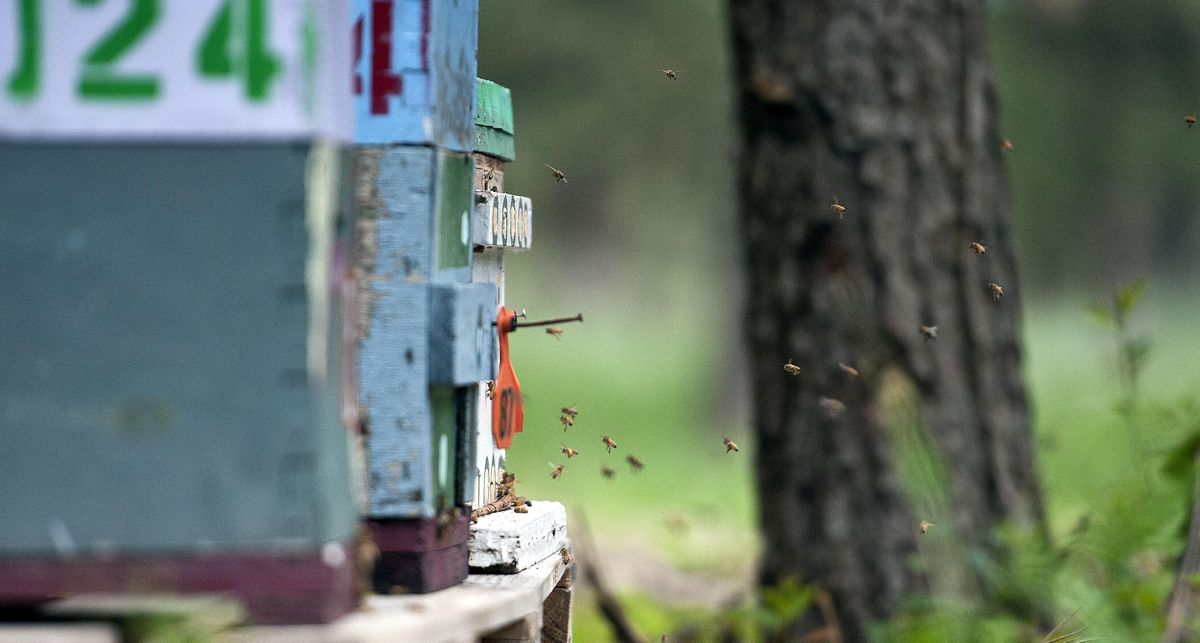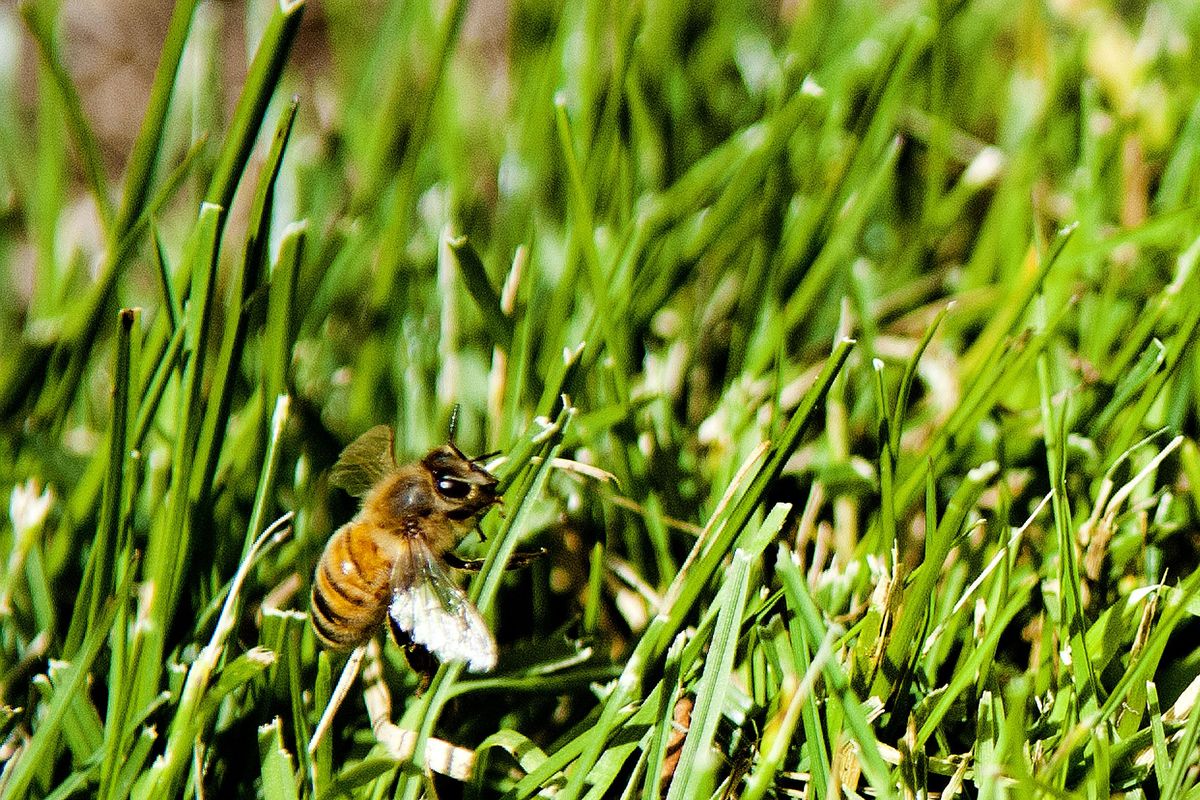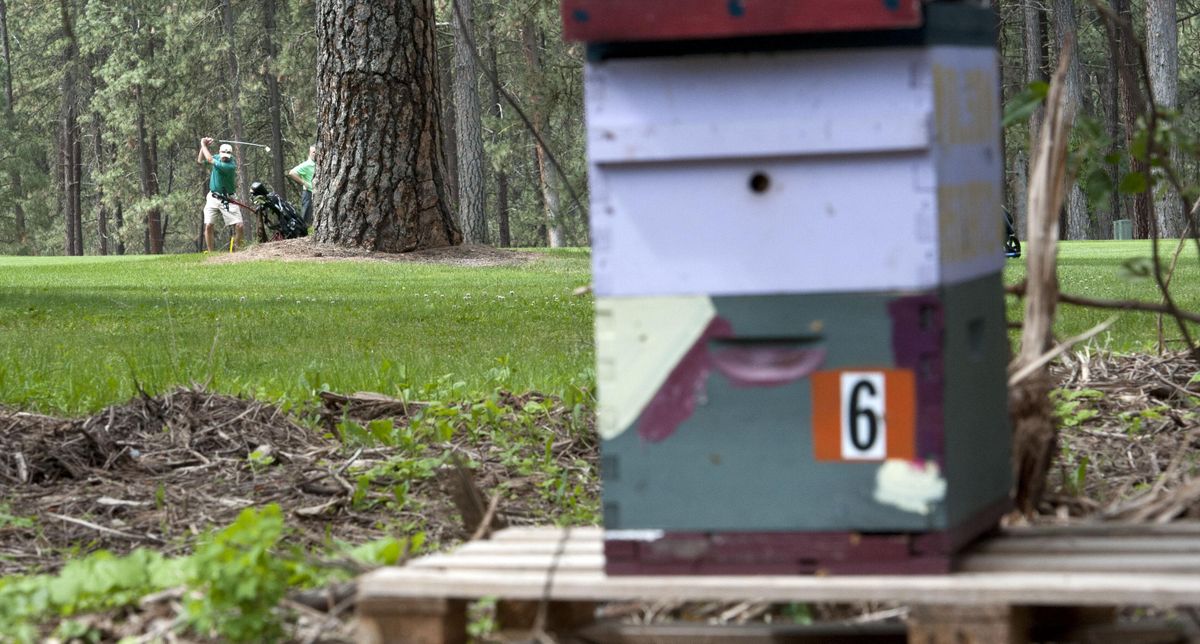Bees among the tees: Golf course embarks on honeybee restoration effort
A honey bee makes its way through the grass at Downriver Golf Course on Monday, June 12, 2017. (Kathy Plonka / The Spokesman-Review)Buy a print of this photo
Golfers teeing up at the sixth and 16th holes of Downriver Golf Course will watch their balls soar past pumpkins, tomatoes, and thousands of wildflowers in the near future.
Three wildflower patches, seeded with 25 species, plus a pumpkin and tomato garden, will soon spring up under the supervision of head golf course superintendent Mike Greene.
“We’ve got all this green space,” said Greene, adding that a significant amount of the property is not occupied by the course’s green.
All of these features will add to the course in their own ways, Greene said. But at the end of the day, their primary function is to support a cornerstone of the ecosystem that has been threatened in recent years. Greene has transformed a little over an acre of Downriver’s approximately 120 acres into a foraging area for pollinators, specifically honeybees.
Greene applied for a grant early this year through the Feed a Bee program, created by Bayer CropScience.
The western honeybee, Apis mellifera, is a threatened species, said Will Olson, Downriver’s beekeeper.
The Spokane Park Board approved a proposal early this year to repurpose some of Downriver’s land. Bayer awarded the course money for this project; however, Greene said the Park Board planned on supporting the honeybee repopulation effort even without this grant.
Downriver received a $2,500 grant from Bayer and was one of more than 50 recipients from 31 states.
“I don’t see a downside to any of it,” Greene said.
“You hear golf courses use a lot of water,” he said, but added that people don’t know that Downriver “supplies oxygen to 150,000 residents in the area.” Greene calculated this number using data from a study published by University of Minnesota, which states that 25 square feet of healthy turf produces enough oxygen for one person every day.
The beehives sit slightly removed from the course near the tomato and pumpkin patch.
Though the bees pollinate over a 2-mile radius, the course has not had an issue with bees interfering with games or stinging golfers.
Greene said the honeybees concern themselves with pollination, not aggression, and Olson said that he hasn’t been stung at Downriver at all during the four or five times he came to check on the hives since the end of May.
Olson provided a beehive of Carniolan honeybees, a hive of Italian honeybees and a hive of honeybees of unknown heritage, the last of which Olson said he rescued. The hives are colorful, Olson said, because bees have poor eyesight. The color helps them distinguish between the hives and return to the correct one.
The golf course plans to harvest the honey and is considering bottling it with a Downriver label to be sold in the pro shop.
Harvested tomatoes likely will become ingredients at the restaurant on site, and the golf course superintendent has big hopes for the pumpkins.
Greene wants to partner with schools and arrange a way for children to participate in the pumpkin harvest, which will produce between 200 and 400 pumpkins this year. He will also donate to SNAP, a nonprofit organization that provides services for low-income people. And, of course, pumpkins will decorate the course around Halloween.



